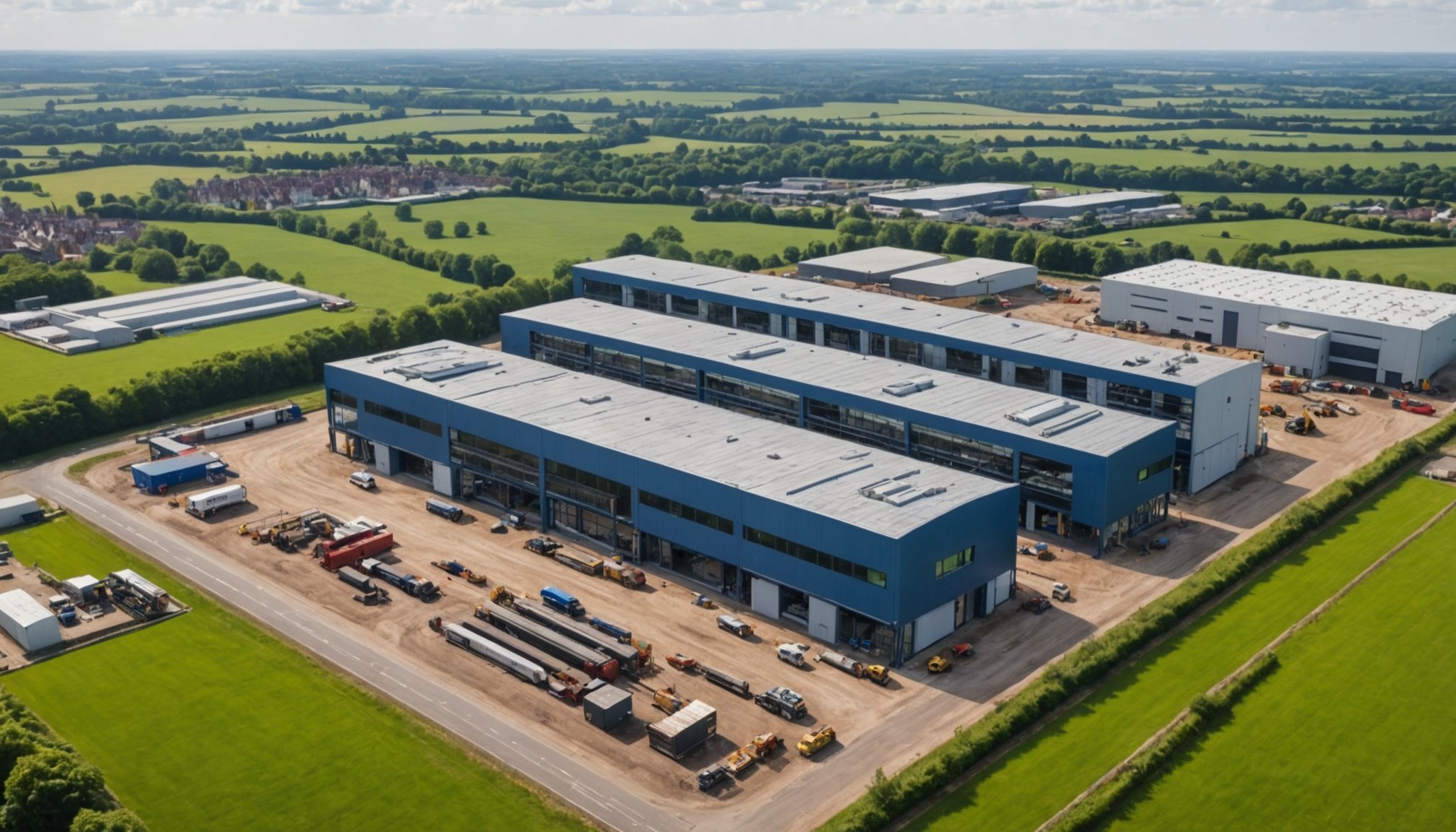Overview of Transformative Innovations in the UK Building Industry
Transformative innovations in the UK building industry are critical in addressing the challenge of reducing carbon emissions. In essence, these innovations involve the adoption and integration of new technologies, processes, and materials designed to lessen the environmental impact of construction activities. Their significance lies in their potential to redefine the way buildings are designed, constructed, and maintained, ultimately leading to substantial carbon emission cuts.
Currently, the UK building industry’s carbon footprint is considerable, accounting for a significant portion of the national greenhouse gas emissions. This impact results from various factors, including energy-intensive construction processes, inefficient building designs, and resource-heavy materials. Addressing this substantial carbon output is crucial to meeting the UK’s sustainability targets and aligning with global climate commitments.
Also to read : Fungi for the future: how mushroom farming is revolutionizing sustainable agriculture in the uk
Innovation plays a pivotal role in achieving these sustainability milestones. By incorporating cutting-edge technologies such as sustainable building materials, energy-efficient designs, and smart building systems, the industry can move towards more environmentally friendly practices. These innovations not only help in cutting carbon emissions but also improve energy efficiency and offer long-term cost savings. Ultimately, embracing transformative innovations is crucial for the UK building industry to transition towards a greener and more sustainable future.
Innovative Technologies Driving Carbon Emission Reductions
In the pursuit of carbon reduction, the implementation of innovative technologies in building practices has become essential. These advancements not only contribute to sustainable development but also enhance the overall efficiency and functionality of modern buildings.
This might interest you : Unlocking the Advantages of Smart Grid Technologies for Efficient Energy Distribution in the UK
Advanced Building Materials
One of the forefront technologies includes the use of low carbon cement and recycled materials. These materials significantly lower the carbon footprint by reducing emissions during their production. High-performance insulation technologies further contribute to energy efficiency by minimizing heat transfer, leading to reduced reliance on heating and cooling systems. Prominent projects, such as eco-friendly office spaces and residential complexes, showcase these materials effectively, exemplifying the potential for wide-scale adoption.
Renewable Energy Integration
Incorporating renewable energy sources like solar panels and wind turbines into building designs offers a sustainable way to power modern structures. Additionally, energy-efficient heating and cooling systems decrease energy consumption while maintaining a comfortable environment. Case studies of successful energy integration demonstrate substantial energy savings and emission reductions, emphasizing the importance and effectiveness of these strategies.
Smart Building Technologies
The role of IoT and automation in energy management cannot be overlooked. By optimizing energy use, smart buildings, through smart grid implementations and enhanced data analytics, achieve greater operational efficiency. This not only contributes to energy savings but also supports proactive maintenance and management strategies, further driving down emissions.
Sustainable Practices in Building Design and Construction
Using sustainable practices in building design and construction is crucial for reducing environmental impact. Transitioning toward greener methods not only helps minimize the carbon footprint but also promotes a healthier, more sustainable future for the construction industry.
Circular Economy Approaches
A circular economy emphasizes reusing resources, which significantly benefits the building sector. The principles of circular design involve planning buildings for waste reduction and efficient recycling. Implementation strategies include utilizing materials that are recyclable and designing structures that allow for easy deconstruction when no longer in use. These approaches enhance resource efficiency, conserve energy, and reduce costs in construction. Projects adopting these methods often experience an extended lifecycle and decreased environmental impacts.
Passive and Active Design Principles
Designing buildings with passive solar design and natural ventilation not only optimizes energy usage but also improves indoor climate conditions. Proper building orientation and strategic landscaping are crucial as they maximize natural light and wind flow, further reducing energy demands. Success stories in various regions have shown that these sustainable methods result in improved building performance and reduced operational costs.
Collaboration and Stakeholder Engagement
Engaging multiple stakeholders is key to fostering innovation in sustainable practices. Public-private collaborations are often at the forefront of these initiatives. They unite expertise and resources to drive sustainable projects forward. By employing effective strategies to involve communities, stakeholders can ensure practices are sustainable and impactful, creating lasting developments that benefit all involved.
Regulatory Frameworks and Policies Supporting Innovation
Navigating the regulatory frameworks and policies in the UK is crucial for fostering innovation while meeting sustainability goals.
Government Initiatives and Incentives
The UK government actively promotes carbon reduction through several key policies. Among these, financial incentives, such as grants and tax breaks, encourage green building projects. For instance, the Green Homes Grant scheme aimed to improve energy efficiency in residential buildings through financial support. However, the scheme’s allocation and execution received mixed reviews, indicating room for improved effectiveness in current policies.
Industry Standards and Certifications
Industry standards, like BREEAM and LEED certifications, play a pivotal role in advancing sustainable building practices. BREEAM provides a comprehensive assessment of a building’s sustainability while LEED offers a global standard for green construction. Both contribute significantly to increasing the marketability of projects. Furthermore, UK construction energy efficiency standards demand rigorous compliance, pushing the industry towards more sustainable methods.
Future Regulatory Trends
As regulatory environments evolve, future laws will likely impact construction practices. The push towards zero-carbon targets means increasing stringency in building regulations. Experts suggest adapting to these changes is paramount for compliance and continued innovation, ensuring the construction industry stays ahead of forthcoming regulatory demands.
Impact and Potential of Innovations on Carbon Reduction
Understanding the carbon reduction impact of innovations in the building sector is crucial for achieving substantial environmental benefits. By incorporating cutting-edge technologies and practices, the building sector plays a pivotal role in mitigating emissions and promoting sustainability.
Quantifying Carbon Emission Reductions
Quantifying emission reductions involves examining statistics from current building sector innovations. These innovations have showcased a significant decrease in emissions, highlighting their effectiveness. For accurate measurement, methods like the carbon footprint analysis are used to assess the reduction impact. Case studies often compare pre- and post-innovation emissions, demonstrating tangible environmental benefits.
Long-term Benefits for the Building Industry
Adopting sustainable practices offers considerable economic advantages, such as reduced energy costs and enhanced property value. Social implications are equally noteworthy, as carbon reduction initiatives can lead to healthier, more resilient communities. Future-proofing strategies, including energy-efficient designs and smart technology integration, ensure that the building sector remains adaptable to evolving sustainability demands.
Role of Expertise and Research
Continuous research and technological development are vital for sustained innovation. Academic institutions contribute significantly by developing new technologies and providing insights that drive industry advancements. Collaboration between research teams and industry stakeholders can lead to practical outcomes that enhance the effectiveness of carbon reduction efforts.











